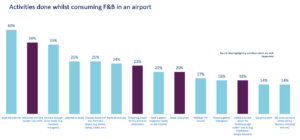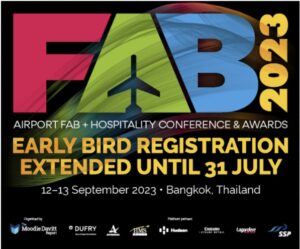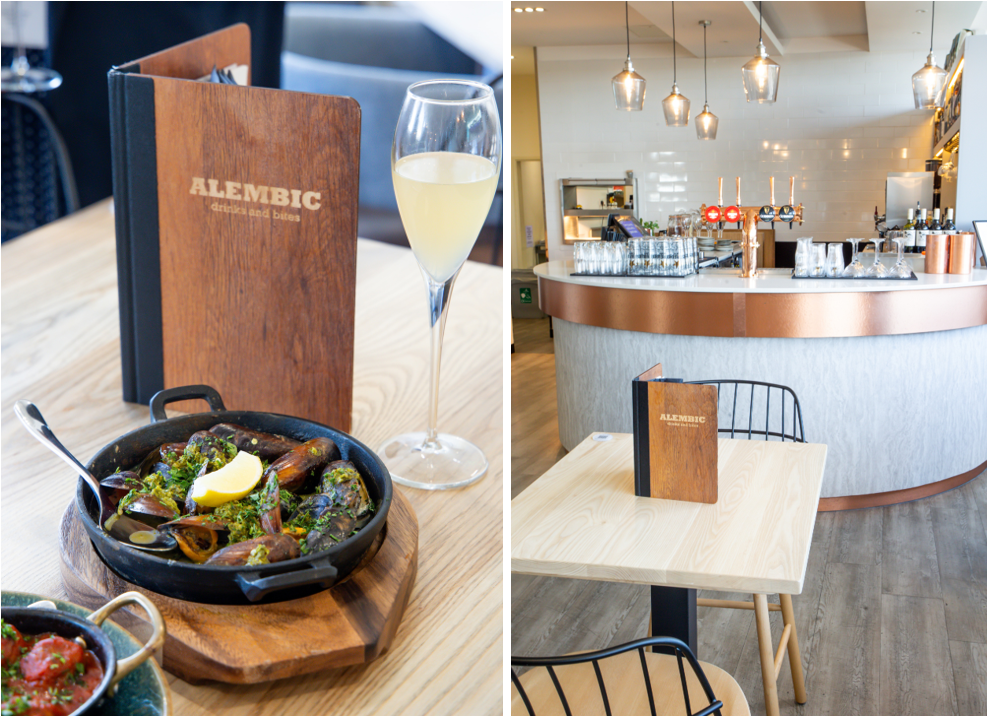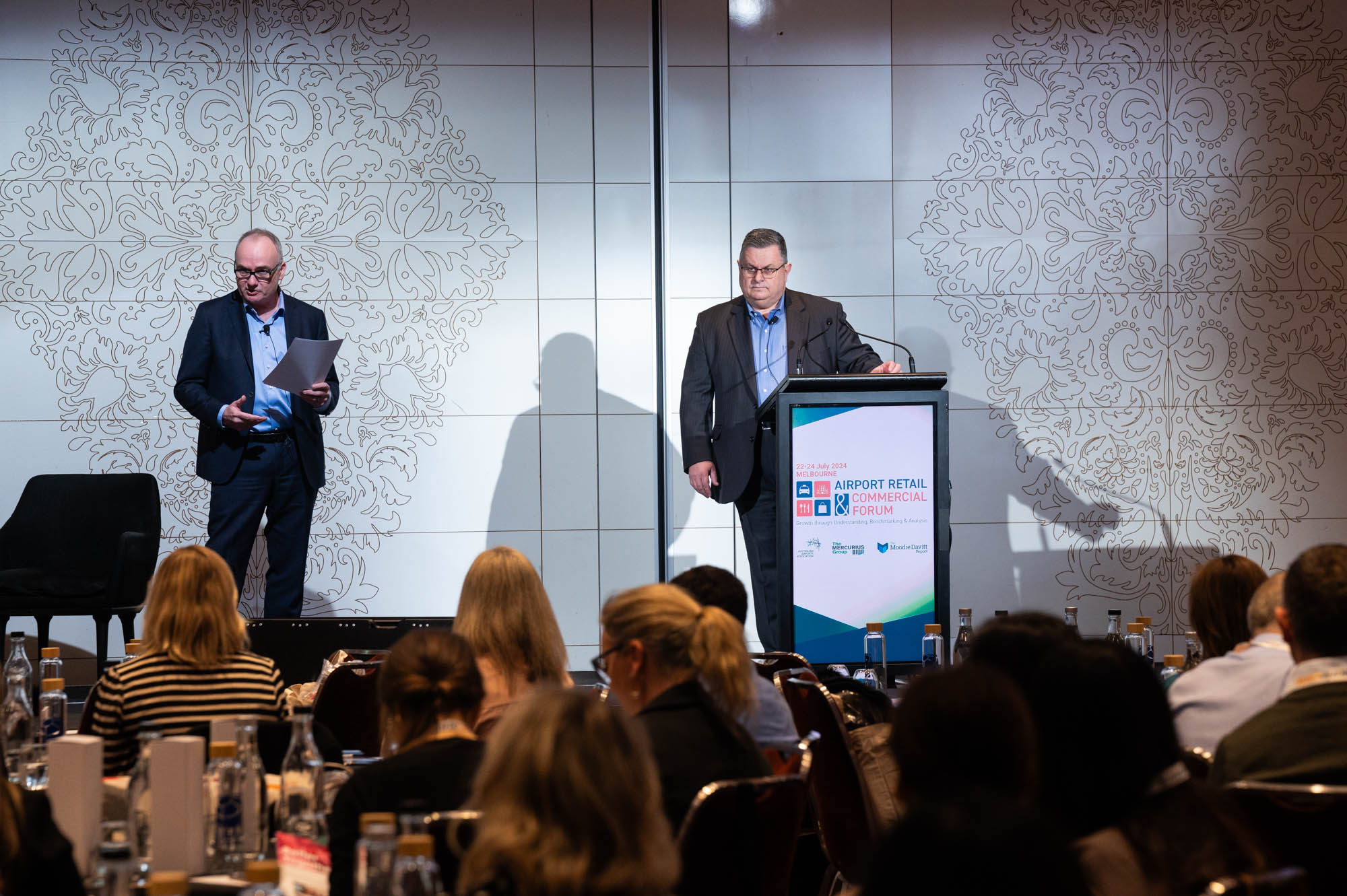INTERNATIONAL. The Insights Team at travel restaurateur SSP recently conducted the Food Travel Insights Survey, the largest piece of customer research in its history. It interviewed 18,000 guests across 25 markets, collecting around three million data points.
The research – conducted in partnership with Saatchi Group’s Clear – covers topics from digital, to sustainability, health and wellness, and also post-COVID attitudes. It gives an insightful view of customers’ preferences and what is important to them when buying food & beverage in travel settings, as well as how this differs by consumer segment, geography and channel.
Here, we present the key survey findings.

Five global F&B trends to shape strategy
The research has identified some significant shifts in customer behaviour since COVID-19.
- Customers that are eager to travel now see F&B as an integral part of their holiday experience.
The SSP survey revealed that over half (52%) of leisure customers see eating and drinking at an airport as an essential part of their holiday experience. What’s more, as travel has returned to ‘normal’, 83% of travellers now say they’re more likely to purchase food & beverage in the airport.
Food and drink options that reflect their tastes and needs are therefore essential to take advantage of this increased desire to engage with F&B during customers’ travels.

- Continued increase in digital competency across all demographics. Digital services are important to customers to simplify their journey.
One in five travelling customers want to be able to order digitally. This desire is particularly strong in the EEME (Europe, Eurasia and the Middle East)/India and APAC regions, where 36% and 29% respectively said digital F&B order options were important to them during their travels.
Customers are looking for ease, and digital is seen as something that can simplify the journey. Using digital ordering systems such as OAT (order at table) help to overcome ‘travel nuances’ of time and space and give them back control.
- Sustainability and wellbeing have grown in importance to customers.
One in five say they choose more ethical or sustainable options. Globally, more than two-thirds of travellers state healthy F&B options are important to them when travelling. The desire for healthy options is particularly strong in EEME/India, where 80% said a healthy choice was important, followed by 78% in APAC and 70% in North America.
However, customers are also looking for value and quality, so these factors must play a strong part in the mix to entice business, which is why healthy product sales are not entirely reflective of customer intention.

- It is important to have a tiered offer approach to pricing.
The economy is recovering in a ‘k-shape’ where many people are affected by the cost of living crisis on different levels. As the global crisis bites, more customers say it’s important that they get value for money.
A third say this is now a key motivation when choosing an F&B outlet. However, 40% say they’re willing to pay more for the best quality food and drink and it is important to have products that cater for customers’ different price needs.
- There is still work to be done on closing the gap on the high street.
The travel sector has to operate in a more complex environment and customers have a heightened sense of self, making some customers more stressed and others more indulgent.

Travelling customers segmented
The SSP survey identified seven separate types of customers. Here are three examples:
Aspirational Foodie
Aspirational Foodies want to see choice and explore new options, but also want to keep a close eye on what they’re spending. They favour ‘local heroes’ and independent brands, and issues such as sustainability and wellness matter to them. They are likely to be middle-aged, with a good income, and are comprised of an even number of men and women.

Mainstream Fans
Mainstream Fans seek the comfort and reliability of mainstream and much-loved brands. They possess less disposable income and look for foods that the whole family will enjoy and offer great value for money, with sandwiches and burgers being among their favourite cuisines.
Frugal Eaters
Frugal Eaters are price sensitive and will prioritise cheaper F&B options over service experience. This category of customer looks for meal deals and want to be served as quickly as possible. They don’t believe their eating experience will add to their travel experience and would rather spend their money on other things.

Travel nuances
SSP notes that the mindset of customers in the travel space is very different to the mindset of high street customers. The stress of travelling, the pressure of time and the complexity of the environment all play a part in changing the way customers feel, think and behave.
Through its research, SSP has been able to identify significant drivers of customer behaviour when choosing F&B in a travel environment. These are the main differences between the travel food operating environment and that of the high street, and the travel restaurateur refers to these as ‘travel nuances’.
One of the largest travel nuances, SSP noted, is time (e.g. how long will it take to be served, length of queues). This is one of the biggest factors and differences compared with the high street.
The travel restaurateur also observes that its customers are under greater time pressures than they would be in high street. Therefore, speed of service, ease of portability and convenience are part of a customer’s consideration when choosing where to eat, and this is something SSP considers when creating an F&B brand’s proposition.

SSP study history
SSP’s research has painted a detailed picture of the attitudes and behaviours in a dynamic market for over 15 years. Here are some historical snapshots of findings:
2007
- All customer segments exist in all markets, just in different proportions.
- There are more similarities than differences between customers in these markets.
2010
- Customers have become more value conscious – they look for more meal deals and average spend has fallen as a repercussion of the 2008 financial crash.
- The airport experience has improved.

2013
- The industry has raised the bar when it comes to F&B in travel.
- There is more engagement in what consumers expect from travel hubs.
- Technological improvements have made customers more demanding in terms of the information they expect.
2015
- Time, product offer and price are core customer needs.
- Convenience and familiarity are key influences on F&B outlet choice.
2018
- Customers are demanding an even better quality of food and more of an experience.
- There is an increased expectation for food service to be quick and easily available.

In 2023, what’s the same?
- There are more similarities than differences across countries.
- Broader trends permeate F&B in travel.
- Time, space, convenience, multi-tasking and value are paramount concerns.
What’s different?
- Consumers are increasingly reliant on digital, expect to receive information instantly and for things to happen seamlessly.
- Wellbeing and sustainability are growing in importance but price, convenience and quality remain stronger drivers to purchase.
Note: The Moodie Davitt Report publishes the FAB Newsletter, which features highlights of openings, events and campaigns from around the world of airport and travel dining. Please email Kristyn@MoodieDavittReport.com to subscribe.









